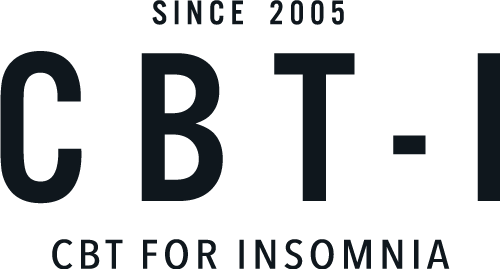Sleeping Pills and Reward Pathways
Drug dependency implies tolerance (larger doses of the drug are required to produce an effect) or withdrawal symptoms such as anxiety, agitation, or physical stress reactions when the individual attempts to stop using the drug. Drug addiction involves drug use that adversely affects occupational, personal, or social functioning because the individual cannot stop or control use of the drug.
Research on narcotics, cocaine, methamphetamine, and alcohol demonstrates that these drugs can lead to dependency and addiction by a common neurobiological pathway involving increased release of dopamine, a neurotransmitter in the brain’s reward system (also known as the brain’s pleasure center). The increased dopamine produced by these drugs in the brain’s reward area/pleasure system, which is pleasurable and reinforcing, can lead to long-term changes in the activity of dopamine-producing neurons in the reward system. Dopamine is considered a key ingredient in addiction, as people who experience rapid surges in dopamine tend to feel sensations of pleasure or euphoria. Drugs that tap into the brain’s reward system like this are often considered very addictive, and this may explain why many people develop addictions to these drugs.
Research funded by the National Institute on Drug Abuse demonstrates that benzodiazepine medications, and benzodiazepine-like medications such as Ambien, may lead to dependency and addiction through a similar neurobiological pathway. This research shows that benzodiazepines inhibit control over dopamine in the reward system by increasing an inhibitory neurotransmitter called GABA at the alpha-1 GABAA receptor subtype (which is specifically where Ambien acts) in inhibitory neurons. These inhibitory neurons normally limit dopamine by inhibiting dopamine neurons. Since GABA is inhibitory, and benzodiazepines and Ambien increase GABA, they inhibit the inhibitory neurons’ ability to control the release of dopamine in the reward system. Inhibition of inhibition is disinhibition, so these drugs disinhibit control of dopamine and it surges.
This mechanism underlying benzodiazepines and Ambien may be subtle and have little, if any, effect on many individuals in terms of dependency or addiction. However, vulnerable individuals may, based upon the following factors, become dependent or addicted to these sleep medications as a result of this mechanism:
– larger doses and daily use
– genetic predisposition and prior history of dependency or addiction
– use of other sedating drugs or alcohol in combination with benzodiazepines due to additive effects
– the half life of the drug (the time it takes to metabolize half the dose), and whether the drug accumulates with daily use
The half life of a drug is particularly important since it determines whether the drug is fully metabolized or accumulates in the brain. A drug is fully metabolized after six half lives, which means that most drugs taken daily with a half life of less than four hours are fully eliminated before the next dose is taken. (In essence, this means that the person fully withdraws daily). For drugs with a half life longer than four hours, accumulation occurs with daily use. For example, the half life of a sleeping pill like Klonopin is 48 hours. If it is taken nightly/every 24 hours, the drug is never fully eliminated and accumulation over a few days is rapid. This results in significantly greater daytime sedation and cognitive impairment. Ativan and Xanax, with half-lives of 15 hours, accumulate rapidly over a few weeks with daily use.
Although many sleeping pill users may not feel a sensation of pleasure or euphoria from taking the pill (in part because they are typically asleep after taking it), the dopamine neurons in the brain’s reward system still may undergo chronic changes in their sensitivity (i.e., plasticity changes) and the individual can become dependent upon, or addicted to, the sleeping pill due to the regular increases in dopamine. Attempts to stop use of the sleeping pill can lead to withdrawal symptoms and negative emotional states such as anxiety, agitation, and irritability that result when the dopamine increases are interrupted. These withdrawal symptoms increase the likelihood of continued use of the sleeping pill and inability to terminate its use.
Average half lives of some of the common sleeping pills used for insomnia:
Valium: 2-5 days and 7-10 days in the elderly
Ativan/lorazepam: 10-24 hours
Klonopin/clonazepam: 18-50 hours
Xanax/alprazolam: 11-18 hours
Ambien/zolpidem: 2.5 hours
With the exception of Ambien, the half lives of all sleeping pills are longer than four hours and some, such as Klonopin, are as long as four days. This means that almost all sleeping pills that are taken daily will accumulate and be continually present in the brain with daily use. Increasing age and combined use of other sedating medications or alcohol will increase the half life of sleeping pills. Therefore, an elderly individual who takes Ambien in combination with alcohol or other sedating medications will likely accumulate Ambien after a month or two of nightly use.
Besides increasing the likelihood of dependency or addiction, accumulation of a sleeping pill is also problematic because the continual presence of these medications in the brain impairs cognitive functions during the day. All sleeping pills, like alcohol, reduce the brain’s response to sensory stimuli and impair learning and memory, depress alertness and cognitive function, and reduce psychomotor activity (i.e., slowing of thought and physical movement) and driving ability. In the elderly, sleeping pills can lead to confusion, falls, and memory loss.
For more information on the latest research on benzodiazepines and the neurobiology of dependency and addiction, click here.
